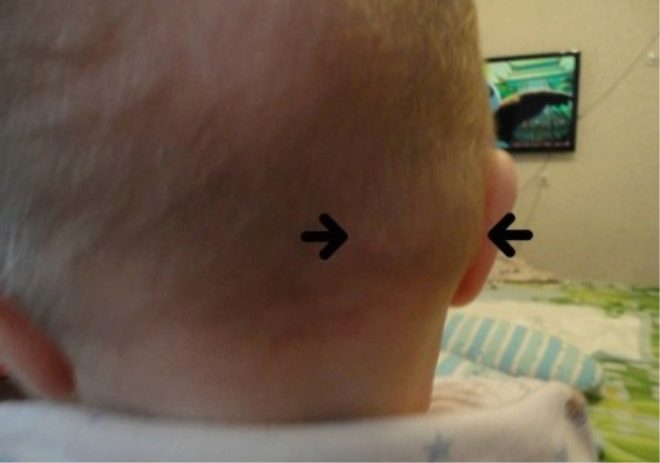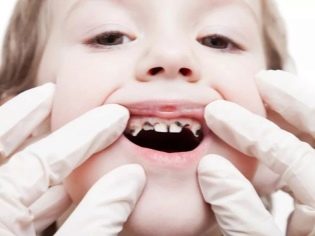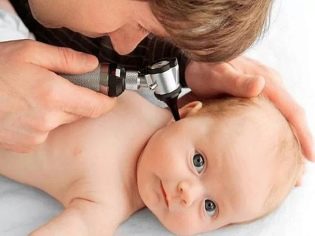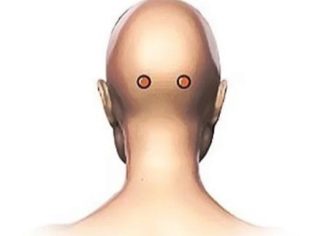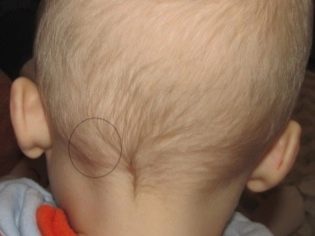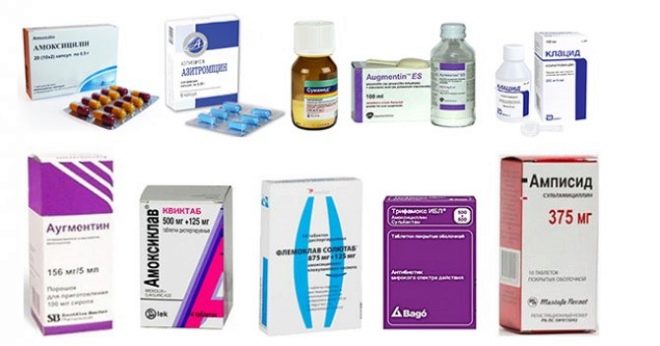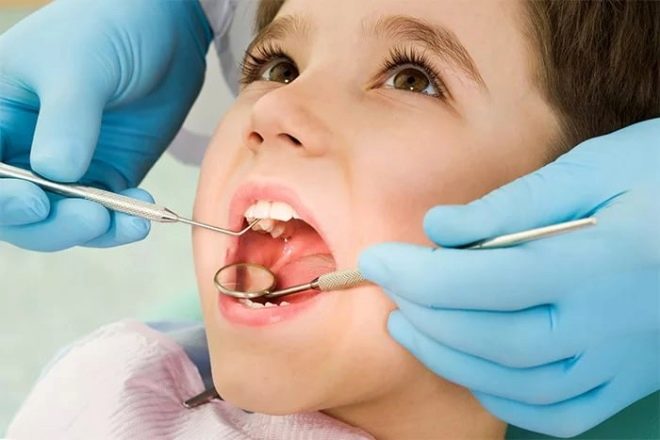Inflammation of the lymph nodes in the back of the head in a child
The lymph nodes on the back of the head in a child may be enlarged for various reasons. Knowing what to do in this situation will be useful to every parent. Inflammation of the lymph nodes at the back of the head in a child is a sign that should be taken as seriously as possible.
Location is normal
Occipital lymph nodes are located on the back of the neck. In a healthy child, they cannot be seen with the naked eye. They are not detected during palpation. If you have a baby have bumps or bumps on the back of the neck, be aware that this is the first specific sign of enlarged lymph nodes.
Lymph nodes are organs of the immune system. They help protect the body from the penetration of pathogens.
The structure of the lymph node is represented by a large accumulation of lymphocytes - special immune cells. They are able to recognize various viruses, bacteria and secrete biologically active substances designed to neutralize them.
In infants, the immune system is not as well developed as in adults. This is the reason that babies of infancy are more often subject to various bacterial and viral infections. In a newborn baby, it is easy to detect inflamed and enlarged lymph nodes. Due to the active inflammatory process, they increase several times and become visible from the outside.
Reasons for increasing
Various reasons can lead to the appearance of enlarged lymph nodes. The basis of this increase is a strong inflammation that occurs in the lymphoid tissue. The severity of symptoms depends on several main factors: the age of the child, the presence of concomitant chronic diseases, and the state of the immune system.
The following reasons lead to an increase in the occipital lymph nodes:
- Bacterial infections. Quite often, the disease is caused by tuberculosis, children's quarantine infections, measles, rubella, staphylococcus and streptococci, aerobic microorganisms. Bacteria easily enter the bloodstream and reach the occipital lymph nodes. This leads to the fact that they are inflamed and markedly increase in size.
- Viruses. Infectious mononucleosis often causes an increase in the lymph nodes at the back of the head in a child. Lack of treatment leads to the fact that this symptom persists for a long time.
- Carious teeth. Infection in the oral cavity often contributes to the spread of pathogens throughout the bloodstream. This leads to the fact that microbes get into the nearest occipital lymph nodes. Usually, the enlarged lymph nodes are palpable in one case. Deep caries, pulpitis and periodontitis are often the causes of occipital lymphadenitis in children.
- Oncological diseases. The enlargement of the lymph nodes in such pathologies occurs already at rather late stages. This is due to the proliferation of metastatic cells to the lymph nodes.
- Chronic tonsillitis. In children who have suffered a severe sore throat or suffer from persistent inflammation tonsils, quite often enlarged occipital lymph nodes are found.
- Purulent abscesses and phlegmon on the neck. Usually, these conditions occur after suffering severe bacterial infections.Such diseases require urgent surgical treatment and the appointment of high doses of antibacterial drugs.
- Chronic otitis. Inflammation of the ear often contributes to the spread of the inflammatory process to the occipital lymph nodes. In some cases, the appearance of this symptom also contributes to acute otitis media, occurring with manifestations of intoxication and severe course.
- Systemic diseases of the blood-forming organs. In these conditions, pronounced disturbances in the functioning of the lymphoid and circulatory systems occur. As a result, this contributes to the appearance of signs of occipital lymphadenitis.
- Severe hypothermia. Walking in frosty weather without a scarf often leads to inflammation of the occipital lymph nodes. According to statistics, it is in the cold season that a greater number of cases of this disease are recorded.
How does it manifest itself?
In a healthy baby, it is impossible to determine the occipital lymph nodes. They are located under the skin and hardly palpable.
When inflammation of the lymph nodes greatly increase in size and become available for palpation. They look like dense tubercles that are located on the back of the neck.
In some cases, they can be bright red and noticeably differ in color from the surrounding skin integument. Other diseases are not accompanied by discoloration. Palpation usually appears soreness. It may increase after active movements of the head and neck, as well as after a hot bath.
Inflamed lymph nodes are usually tightly soldered to the skin. Any attempts to feel them lead only to increased pain. They resemble in size and shape a bob, can be about the size of a nut. In children, the lymph nodes are inflamed much more than in older children.
Where to go?
If you find the first signs of an increase in the occipital lymph nodes, be sure to show the child to the doctor.
To establish the cause that caused this condition, an additional examination is required. After a clinical examination of the baby, the doctor will prescribe the appropriate tests to establish the correct diagnosis.
In some cases, in addition to general clinical tests (urinalysis and blood tests), special instrumental studies may be needed. These include ultrasound examination of the abdominal cavity and kidneys, radiography of the lungs and chest organs. In difficult cases, computed or magnetic resonance imaging may also be required.
How to treat?
Enlarged occipital lymph nodes in no case can not be treated independently. Such self-treatment can only aggravate the course of the disease and contribute to the occurrence of dangerous complications.
Many mothers, noticing the baby's swollen lymph nodes at the back of the head, begin to warm them with various compresses. This should not be done! In some cases, warming the lymph node can lead to its suppuration, after which the child’s well-being will worsen.
Treatment of lymph node inflammation largely depends on the cause that contributed to its development. If the lymph nodes become inflamed after hypothermia, a cold should be treated. Recovery from colds will help keep the size of the lymph nodes back to normal.
Bacterial infections, which often cause inflammation, should be treated with antibacterial agents. The choice of antibiotic in this case depends on the source of the disease. Currently, doctors use drugs with a wide spectrum of action. They have a devastating effect on several groups of microorganisms at once.
Usually, to eliminate the adverse symptoms of bacterial lymphadenitis, it is enough to use antibiotics for 10-14 days. Recovery also contributes to the fact that the size of the lymph nodes will return to normal.Often it takes about 2-3 weeks from the time of onset. In some cases (especially for weakened babies and children with immunodeficiencies) it takes about a month.
Swollen lymph nodes on the back of the head are often the result of the presence of carious teeth. Without treatment of the oral cavity in this case is not enough.
Most often, diseased teeth cause an increase in the occipital lymph nodes in schoolchildren. Abuse of sweets only contributes to the progression of caries.
In some cases, anti-inflammatory drugs are used to eliminate inflammation in the lymph nodes. Dosage, timing is chosen by the attending physician. These funds are able to eliminate the inflammatory process, which is the cause of inflammation of the lymph nodes at the back of the head. Use these funds should be the course. Usually a few days are enough to eliminate the symptoms.
Reception of multivitamin complexes improves immunity and reduces inflammation. The means enriched with vitamins and microelements help the child to recover faster and improve their well-being. To achieve a positive effect should be taken multivitamin complexes for at least 1-2 months.
About what to do with an increase in lymph nodes in a child, see the following video.



